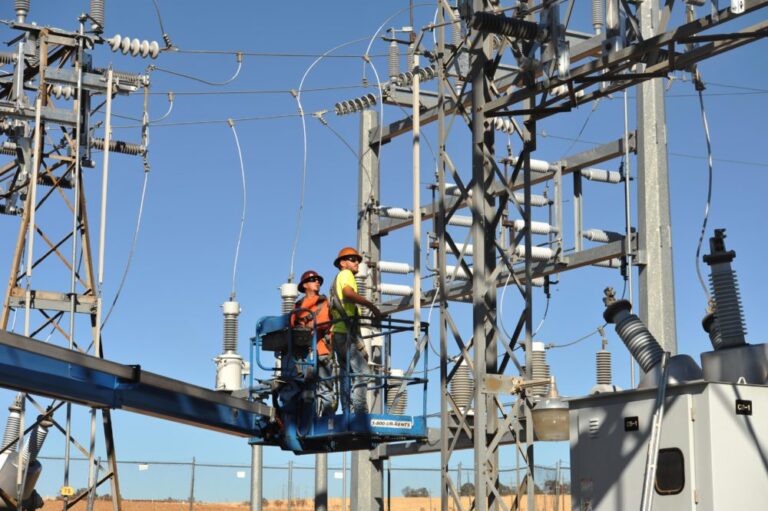Smart grid upgrades may offer less risk in some areas, but experts say conventional transmission projects are still needed in others.
In 2011, MISO approved plans for a massive 17-line transmission project which stretched from Montana to Ohio. While reviewing the plan, the regional network manager, which operates the electric grid in a corridor from the Upper Midwest to the Louisiana Gulf Coast, he was juggling three separate and thorny issues.
The mesh needed strengthening in places, but other areas were congested. In addition, local and state governments adopted a number of renewable energy requirements, all of which they had to be prepared to meet.
“They came up with new transmission lines that serve multiple purposes,” he said Beth Soholt, its executive director Clean Grid Alliancecalling the solution “no regrets”.
Smart grid upgrades offer less risk and greater flexibility than power lines in some cases. But for all the promise of microgrids to boost the electricity grid in some scenarios, much of the country still has a huge need for conventional transmission projects to drive the clean energy transition.
The MISO project, commonly called the Multi-Value Project Portfolio or MVP, illustrates this need and has also contributed to the development of renewable energy sources. Wind farms are rising next to it.
“The renewable energy movement is a primary reason for the need for new transmission,” Soholt said. “Sometimes there are cases where there is no other alternative. We cannot save energy from the need to transmit. We can't microgrid our way out of it. We may be able to save some of it, but there is no other solution.''
Different regions require different approaches, and in some parts of the Midwest, experts say there is still a need to expand transmission to deliver the amount of wind and solar power needed to decarbonize by mid-century.
Different strokes for different areas. In the Midwest we need major transmission expansion to deliver the amount of wind and solar power necessary for decarbonization by mid-century. NWAs are great for optimization, but by no means a replacement for Tx in the Midwest https://t.co/yzmdNdSSmX
— Allen Gleckner (@AllenGleckner) December 12, 2018
“In the Midwest, we have a very good wind and solar resource,” Soholt said. “There's a zone in the Dakotas, in Minnesota, in Iowa that's really, really rich in renewable energy and really affordable to do projects. The more of these we develop and try to use in our regional electricity grid, we will have very cost-effective renewable electricity.”
However, the equation for transport planning is changing and there are now a range of options for building transport infrastructure that can attract investment and ensure the public interest.
“There isn't a utility boardroom in this country that isn't dealing with this issue,” said Benjamin Stafford, director of policy and public affairs at Minnesota Clean Energy Economy. “They're saying, 'We used to see this as a transmission solution, but maybe that's not the least risky move for business and finances.'
Planners look at the portfolio of infrastructure options differently. “Where does the microgrid fit in?” Stafford said. “Where is a transmission solution necessary? Where can we avoid big, long-term discussions and how do we evolve to meet our economic and public interest obligations?”
The ideal is to send a lot of power from wind or solar farms located in less populated areas — where Projects are cheaper to build and natural resources more abundant — in cities and industrial centers with high energy needs.
However, construction of long-distance transportation projects can often be controversial. Transmission lines are permitted at the state and local level, making it complicated to get multi-state projects approved (in contrast, it's a simple stop with the Federal Energy Regulatory Commission for pipelines).
Utilities have largely argued that even with growing demand for distributed energy resources, more transmission projects are needed and can streamline the supply of renewable energy they generate intermittently — for example, during sunny or windy days. More affordable renewables are still limited by insufficient transmission.
“We still have to go from here to there” ComEd Executive Vice President Terence Donnelly said during a conversation at the University of Chicago last year.
But in the past, utilities didn't pay attention to the efficiency of the cables running from power plants to their customers, according to Dave Bryant, director of technology at CTC Globalwhich manufactures high capacity pipelines.
In some cases, the cost of lost energy is passed on to customers, and with a healthy rate of return on capital projects, utilities may be motivated to tear down an entire system and replace it with new equipment before upgrading (although regulations and competition make this less common today).
Bryant supports upgrading the grid with modern pipelines, which can increase the capacity of existing transmission lines. His company makes high-temperature, low-drop cables that they say can reduce current losses by 25 to 40 percent.
“It all leads to a more robust system that will provide more reliable and efficient and clean energy, and a system that will be increasingly affordable,” he said.
Microgrids explained
The market for microgrids is slowly but steadily expanding in the Midwest, and the technology is generating a lot of buzz. But how exactly do microgrids work?


